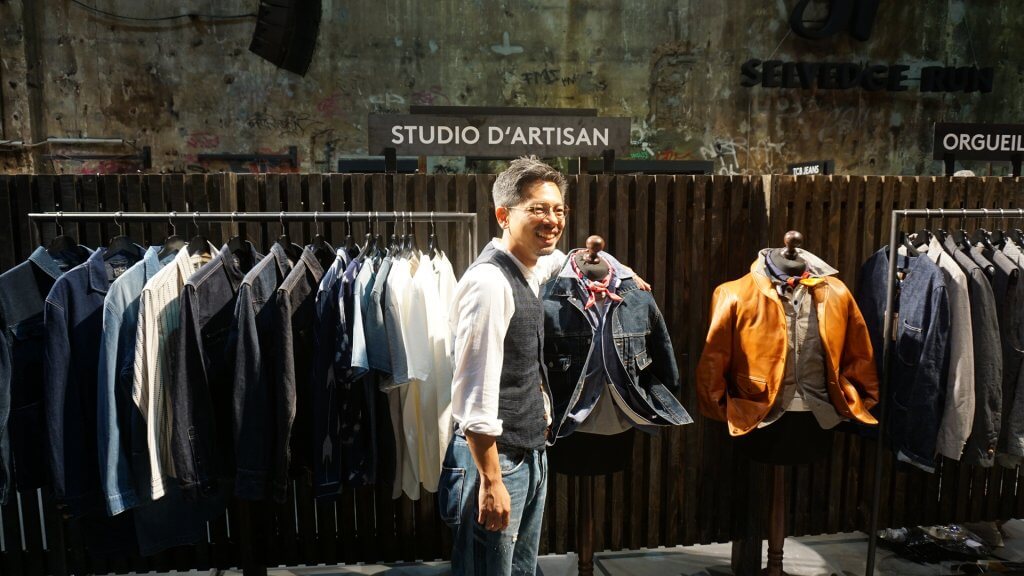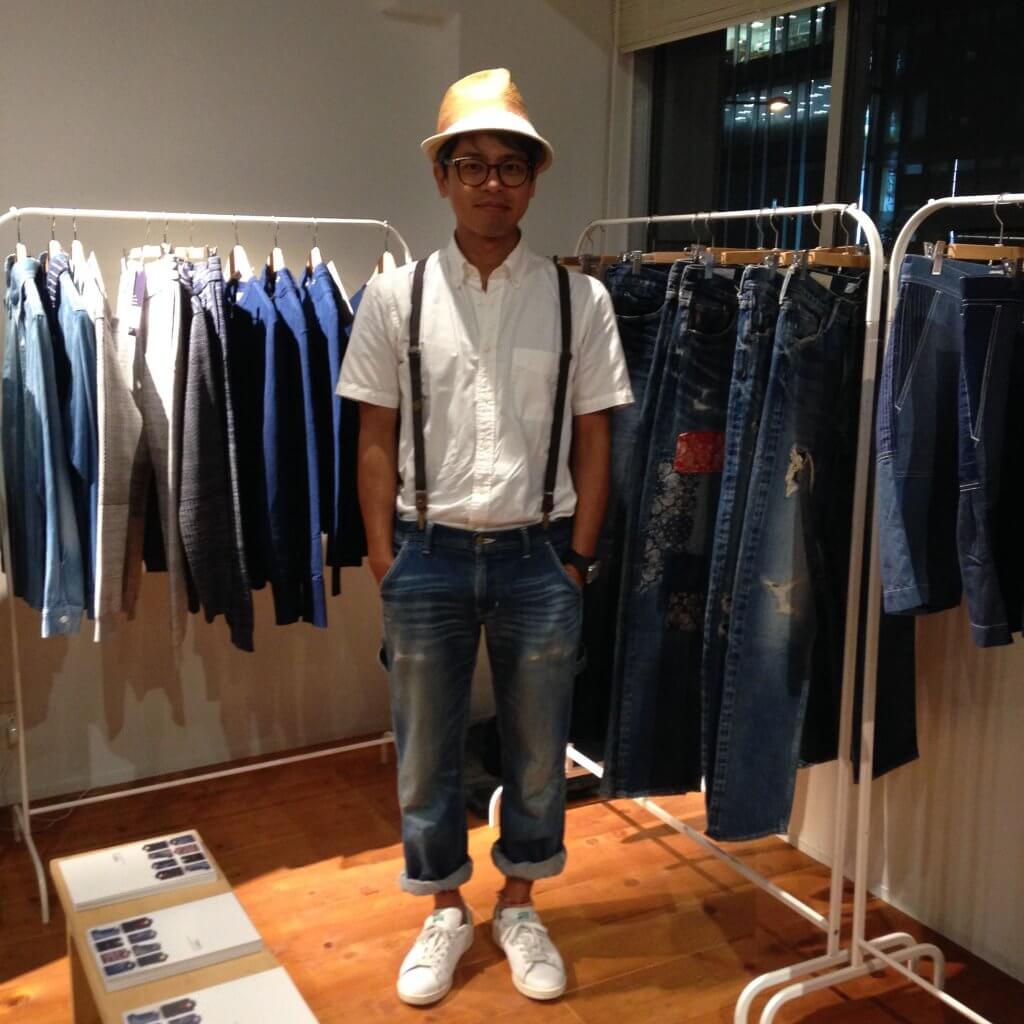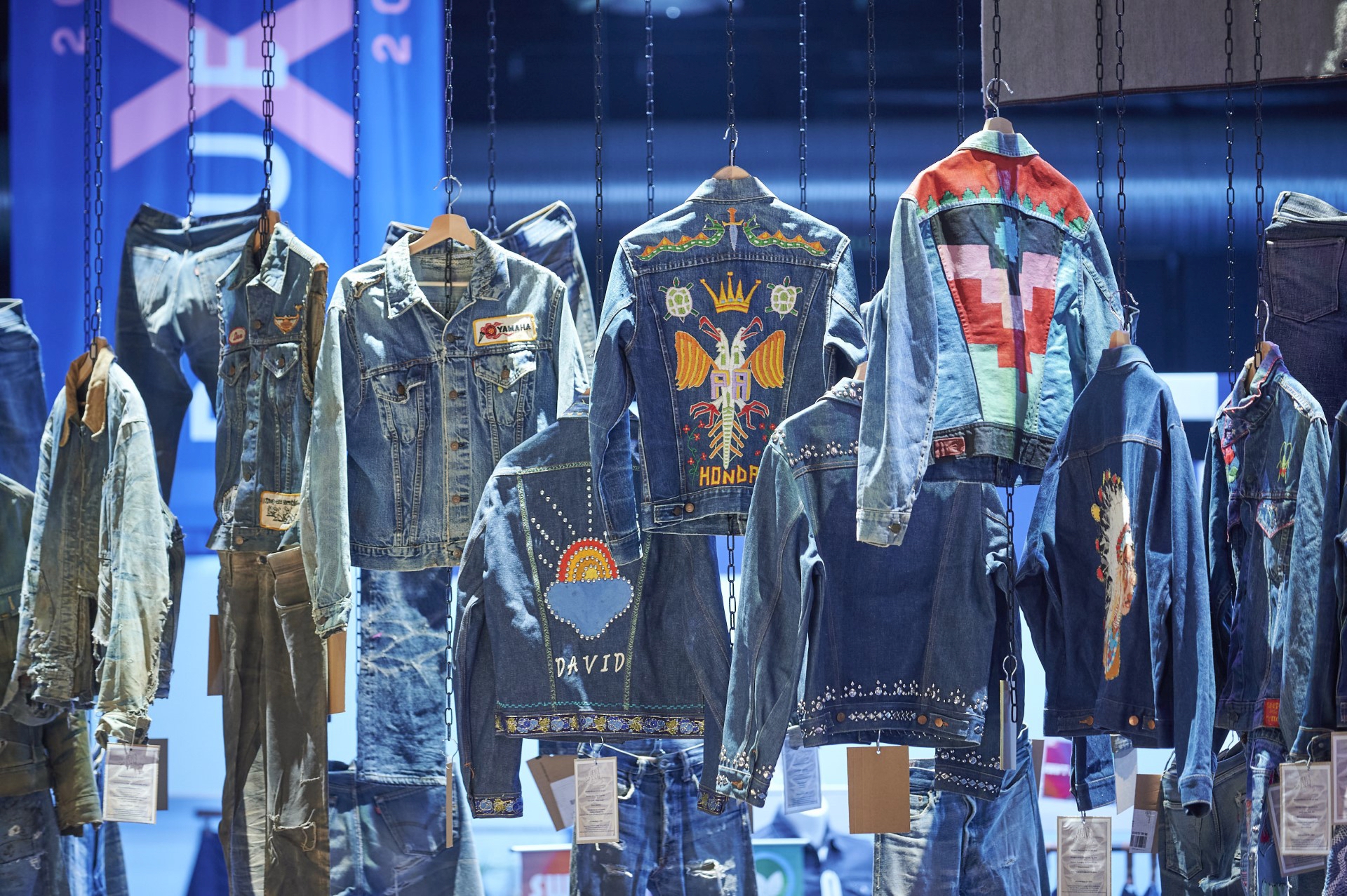Interview Yoshi Yakushiji
During our visits to several trade shows in Europe, we met many interesting people of the denim scene. Owners of cool brands, designers, agents and enthusiastic fans from all over the world come together during those shows to share their common passion for denim. It is truly inspiring to see all those professionals operating in their speciality. A guy, we have already met several times is Yoshi, a friendly Japanese agent.
Yoshi has his own agency, which includes multiple popular Japanese denim brands. Yoshi is building bridges between Japan and the overseas market to help those brands increase their sales outside Japan. We have met Yoshi several times and during those conversations we got inspired by his knowledge of the current denim market.
Recently, we reached out to Yoshi because we want to know more about the differences between the Japanese, the American and European markets. We really enjoyed our talks with Yoshi, and if you want to know more about him or his work, you can visit him during Selvedge Run, which will be held from January 16th until and including January 18th in Berlin, or follow him on Instagram – @mryakushiji.
Robin Denim: Yoshi, can you please start by introducing yourself?
Yoshi: I grew up in a small town in Oita, Kyushu in Japan, and I lived there until I graduated at high school. I went to Osaka to study economics at City University. When I got my license, I moved to Hong Kong to teach the Japanese language at University. Unfortunately, I was fired after three months, because I had too much fun with my students instead of teaching them Japanese.
Luckily, I had many friends living in Hong Kong at that time. They were mostly young people with a great interest in fashion from Japan. They wanted to know everything about Japanese fashion, and this inspired me to create my own free magazine on fashion. I spent two months starting my website with snapshot photos I took on the streets, and I tried to get sponsorships to make it profitable.
Unfortunately, I couldn’t make it to the actual start of the magazine, but, one of the shops that was interested in my plans was TAKE5, a Japanese denim shop in Hong Kong. In 2005, I started working at TAKE5 as a shopassistant. I spent 6 months working at TAKE5, but then I needed to go back to Japan. When I came back to Tokyo, I had started working at a marketing company to learn how to communicate with people, before I established my own agency.
Now, I am supporting brands who want to start selling their products outside Japan. I am a consulting agent and I sometimes operate as a sales agent. My main task is to communicate between Japanese brands and the overseas buyers.

Robin Denim: You are obviously enthusiastic about denim, what has been drawing you into the scene?
Yoshi: When I started working at TAKE5, I had absolutely no knowledge of denim.
I am from, as they call it, the golden age, and spent the 90’s at high-school. During that time, so many new brands started off and I read many magazines on fashion. Fashion, now being called heritage. That’s why it was very easy for me to understand and accept the denim culture.
Robin Denim: Your portfolio includes a couple of popular Japanese brands, can you please name them? And what are your responsibilities regarding those brands?
Yoshi: The brands I am working with are: ARCHBES, BIG JOHN, CLINCH, HOSU, OLD JOE, ORGUEIL, Pherrow’s, RUMBLERED, SAMURAI JEANS, StudioD’Artisan, ¥.JEANS.
I am a middle-man between brands and buyers in order to improve communication, arrange better negotiations, smooth logistics, etc. I also inform those brands on current trends in the overseas markets.
Robin Denim: Besides your work as agent, you are involved in some other awesome projects. In which projects are you currently involved?
Yoshi: I worked together with Mr. Fujihara, the author of the 501xx book, during the second print in 2016. Initially, he wanted to reach people from all over the world, but unfortunately, that didn’t happen. Mr. Fujihara and I decided to sell the book again and we draw a plan to reach more people than we did the first time. I informed him about the involvement of buyers from Europe and Asia.
As an expert partner, I am involved in JETRO, a program of the Japanese government. In this program, they are helping Japanese manufacturers to export their products to all over the world. My responsibility is to inform those companies about the overseas market as an International Fashion Business Expert.
The position of middle-man between Japanese manufacturers and the overseas markets allows me to do a lot of interesting projects. Later this month, we will organize a fabric trade show in Okayama, to present small local fabric mills to international buyers. I am inviting many international brands, so if you are interested, please let me know!

Robin Denim: Yoshi, basically your work is to keep an eye on both the overseas and Japanese denim market and to build a bridge for the brands in your portfolio. We would love to elaborate on the differences between the markets.
Robin Denim: Many European and American denim brands are focused on Japan. What is, in your opinion, the reason for this phenomenon?
Yoshi: Once, somebody told me that there are two important reasons for the extremely high quality of Japanese denim. The first reason is that it is still being woven on traditional shuttle looms, and the other reason is the use of crystal clear natural water which results in a better indigo dye.
In my opinion, there are more reasons determining the high quality of Japanese denim. Of course, the technique of making denim, and the long history starting after the 1970’s are very important. This long history formed an original denim culture, where quality is more important than volume. It seems that the Japanese mills don’t care about the amount of time the process will take, the only thing that really matters is achieving the highest quality of denim.
Robin Denim: What is the difference between the Japanese & the European market?
Yoshi: Jeans made in Europe, are priced for the European market. The prices of the products fit into the market. Jeans made in in Japan, are priced for the Japanese market. Most brands firstly focus on the marketing, prices and sales concerning their own market. Once a brand wants to cross borders, it has to work with different systems, cultures and marketing. Maybe I can help European and American brands to enter the Japanese market in the future.
Japanese denim started as a reproduction of Levi’s. So I think when you ask people in a Japanese factory about a nice denim fabric, I guess their answers will be like, ‘a thick and strong heavy fabrics.’ In my opinion, the use of heavy fabrics derives from the original use of denim at Levi’s.
About the fits and cuts, I think it mainly depends on the type of brands. If they focus on the heritage market, they will choose a wider cut. But, if they focus on the young market, Japanese brands will come up with a tapered fit. The body type of Japanese people is different, another important fact that brands should understand.

Robin Denim: Is it hard to enter foreign markets for a Japanese denim brand?
Yoshi: In the last ten years, there was a big wave of new Japanese denim brands. Many brands focused their marketing on the Japanese market only and were picked up by Japanese buyers. We have so many denim brands in Japan today, that this is the time to start thinking about global marketing and branding. For many Japanese brands, this will be hard.
Robin Denim: What are the major latest trends in Japan? Is it different compared to Europe?
Yoshi: The Japanese fashion market has grown a lot since the 1990’s. I think we have already developed our own culture in the fashion industry. Today, a popular trend in the Japanese market is the West Coast style from California, USA. A foreign brand being super popular in Japan these days is, Denham the Jeanmaker.
Robin Denim: When we speak with brands from Japan, most of the time they mention Europe and America together when it comes to the overseas market. Are there differences between those markets? Or is the market quite the same?
Yoshi: In my opinion there is not such a big difference, but it depends on the brands themselves. Iron Heart is a good example. Their brand image is a motorcycle, and their style is adopted in both Europe and the USA. Although, I am concerned about the marketing strategies of Japanese brands for the overseas markets, it also works the other way ‘round, European brands need to have a different strategy in order to enter the Japanese market.
Robin Denim: Japanese brands are best in creating a pair of high-quality jeans. What do you think is something they have to improve to become more popular overseas?
Yoshi: What Japanese brands need to understand are the differences between cultures, markets, people and time schedules. They need to set up a good and feasible marketing strategy for the overseas markets. Finding a trustful partner in each market will also be very helpful.

 Share
Share
 Tweet
Tweet



